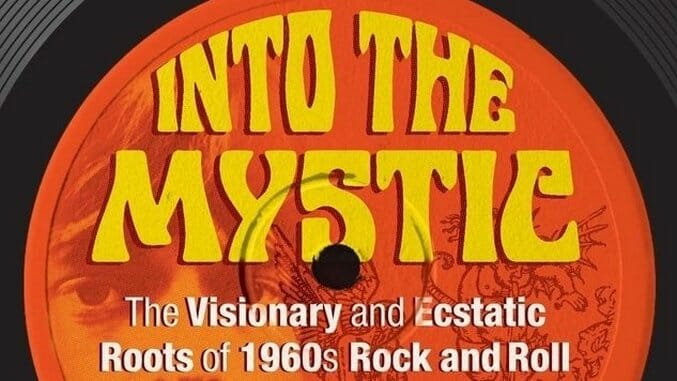Christopher Hill’s Into the Mystic Combines Rock and Roll History with Ecstatic Traditions

The word “ecstasy” derives from Greek and Latin roots, and it technically means something like “being beside yourself.” It’s a dissociative trance state brought on by extremely heightened emotions, and while its use today is related to joy or delight or exultation, it also encompasses things like grief, pain, and suffering. Regardless of the provocation, ecstatic states are associated with intense metaphysical experiences and divine inspiration.
Christopher Hill’s Into the Mystic explores the intersections of 1960s American rock and roll with ecstatic traditions around the world. He discusses some of the cultural precursors to psychedelic rock, beginning with illuminating passages about the spiritual traditions enslaved African people brought with them to North America. From there, Hill highlights a few seminal albums of the 1960s in the context of ecstatic and mystical history; there are chapters devoted to the Beatles, Van Morrison, the Rolling Stones, The Velvet Underground, the Grateful Dead, and a handful of others.
 For anyone interested in music history or the history of ecstatic traditions (or both), Into the Mystic is a worthwhile read. It focuses less on things like the mechanisms of altered consciousness and more on how mystical elements are passed from one time and place to another. But if you have a short attention span, be prepared for a book that often doesn’t stay focused on one thing for a sustained period of time; Hill tends to go long versus deep in his analyses, and the effect can be jarring. The bulk of the text focuses on 1960s American and British music history, which, in a way, is a shame. Because even though Hill’s background is in music journalism, he’s often at his most interesting when discussing Rimbaud or Sufism or troubadours or slavery.
For anyone interested in music history or the history of ecstatic traditions (or both), Into the Mystic is a worthwhile read. It focuses less on things like the mechanisms of altered consciousness and more on how mystical elements are passed from one time and place to another. But if you have a short attention span, be prepared for a book that often doesn’t stay focused on one thing for a sustained period of time; Hill tends to go long versus deep in his analyses, and the effect can be jarring. The bulk of the text focuses on 1960s American and British music history, which, in a way, is a shame. Because even though Hill’s background is in music journalism, he’s often at his most interesting when discussing Rimbaud or Sufism or troubadours or slavery.
Readers must sit through a number of Grand Pronouncements (“There isn’t any greater sound in rock ‘n’ roll than John Lennon and Paul McCartney singing together” shouldn’t be stated as an empirical fact) and navigate a chaotic landscape of subjects. There’s an almost-there quality to a lot of the writing, as if Hill comes close to establishing meaningful connections but then veers into band anecdotes or other digressions. As a whole, the book stops short of coalescing into a well-supported thesis. That doesn’t mean there isn’t one there to support-you’ll just have to make some of the leaps yourself.
Into the Mystic proves rich with information overall, and Hill makes some fascinating points about the cultural, historical and biographical tributaries that flow together to create a given band’s esthetic or style. Many sections of this book could serve as springboards into whole other books, and perhaps they should.
At a certain level, an ecstatic state is an ecstatic state because it can’t quite be articulated. But it can be sensed, and sometimes the closest thing we have to a medium for communicating it is music. But mysticism is a much bigger subject than its own relationship to music, and Into the Mystic is a tantalizing, but far from comprehensive, foray into that space.
Amy Glynn is a poet, essayist and frustrated pop music also-ran who knows all the lyrics to Van Morrison’s “Rave On, John Donne.” She lives in the San Francisco Bay Area.